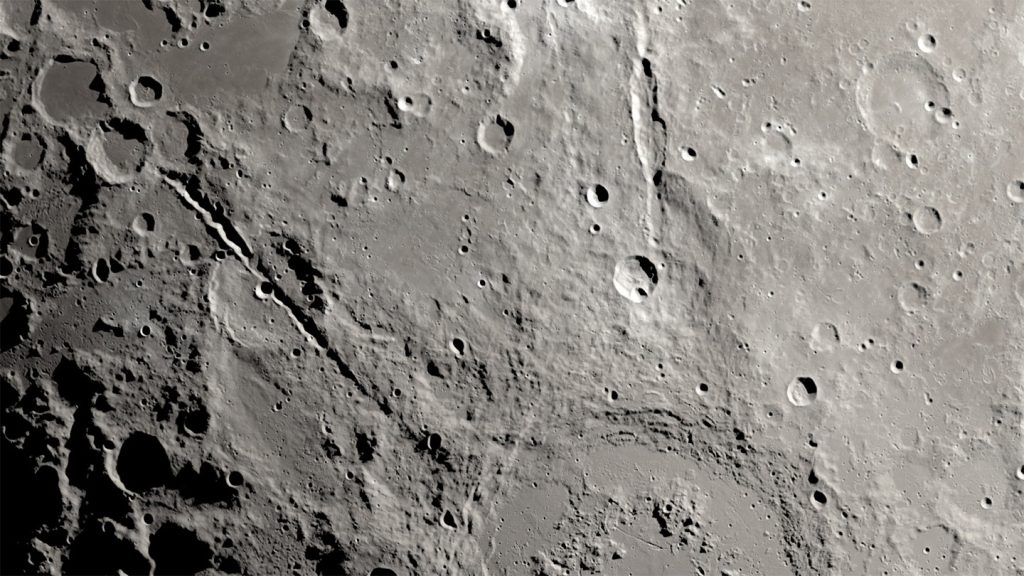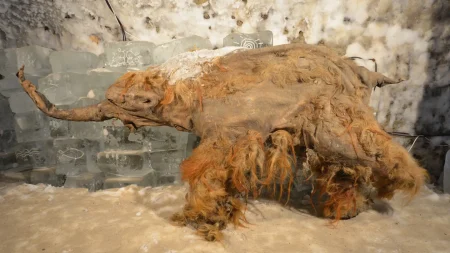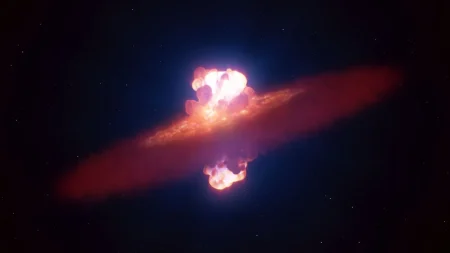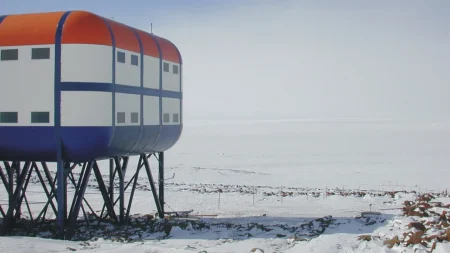The lunar south pole, a region of immense scientific interest, bears the scars of a colossal impact that occurred approximately 3.8 billion years ago. This impact, centered near the lunar south pole, ejected a tremendous curtain of rock outward from the impact site. The subsequent descent of this ejected material sculpted the lunar surface in a dramatic display of cosmic violence, carving out two immense canyons, Vallis Schrödinger and Vallis Planck. New research reveals the astonishing speed and force involved in this process, providing insights into the formation of these canyons and the preservation of ancient lunar terrain.
The impact that birthed the Schrödinger basin and its accompanying canyons unleashed an energy equivalent to 130 times the combined power of all nuclear weapons on Earth. As the curtain of ejected rock plummeted back to the lunar surface, individual boulders slammed into the ground with devastating force, penetrating up to 3.5 kilometers deep. This relentless bombardment, a staccato barrage of cosmic projectiles, rapidly excavated the two immense canyons. This process, according to the latest calculations, unfolded with remarkable swiftness, carving the canyons in a mere 10 minutes.
Vallis Schrödinger and Vallis Planck are geological marvels, dwarfing even Earth’s Grand Canyon in scale and depth. Stretching 270 and 280 kilometers respectively, and reaching depths of up to 3.5 kilometers, these canyons stand as testaments to the immense energies involved in their formation. The Grand Canyon, by comparison, meanders for 446 kilometers but reaches a maximum depth of only 1.9 kilometers. The stark, straight lines of the lunar canyons, radiating outwards from the Schrödinger basin, provide clues to the dynamics of the impact event.
The formation of the Schrödinger basin and its canyons holds significant implications for lunar exploration, particularly for NASA’s upcoming Artemis missions. The lunar south pole is believed to harbor some of the oldest rocks on the moon, potentially dating back to its formation around 4 billion years ago. Accessing these pristine samples would offer invaluable insights into the early history of the Earth-moon system, providing crucial data for understanding the moon’s formation and evolution. However, the proximity of the Artemis landing site to the Schrödinger basin raised concerns about the potential burial of these ancient rocks by ejecta from the basin-forming impact.
The new research offers reassuring news for the Artemis mission. The analysis of spacecraft imagery reveals that the straight lines of the canyons converge towards the southern edge of the Schrödinger basin, indicating that the impacting object approached the moon at an angle. This oblique impact trajectory resulted in the preferential northward ejection of material, minimizing the deposition of ejecta on the anticipated Artemis landing zone. This finding suggests that the ancient lunar terrain south of the Schrödinger basin remains largely undisturbed, offering a pristine window into the moon’s early history.
The preservation of this ancient terrain provides an unprecedented opportunity to delve deeper into lunar history and unravel the mysteries surrounding the formation and evolution of the Earth-moon system. By accessing and analyzing samples from this region, scientists can gain a better understanding of the processes that shaped the moon’s early crust and the conditions that prevailed during its formative years. The findings of this study not only shed light on the dramatic events that sculpted the lunar south pole but also enhance the scientific potential of the Artemis missions, paving the way for groundbreaking discoveries about the moon’s past and its connection to our planet.















